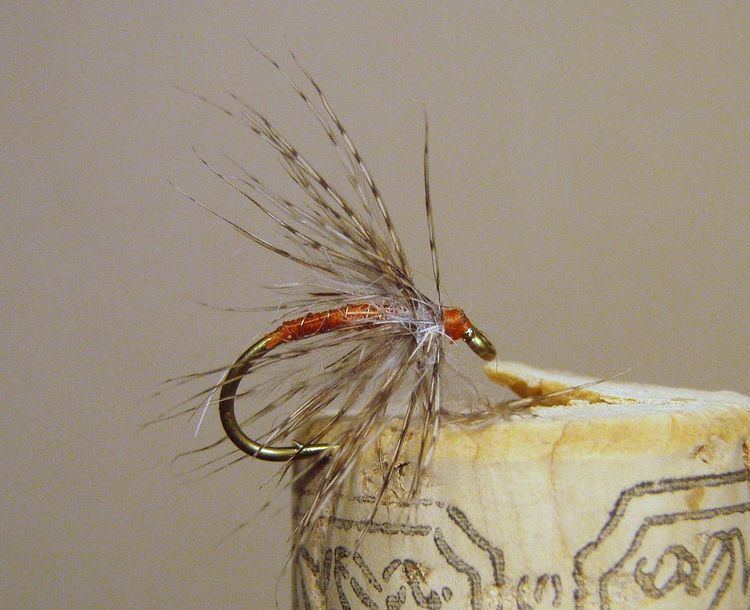Type Wet fly, soft hackle Other names Spiders | Created 19th century Typical sizes 12-18 | |
 | ||
Creator Unknown, described by T.E. Pritt (1895) | ||
The Partridge and Orange is an artificial fly commonly categorized as a wet fly or soft hackle and is fished under the water surface. The fly is a well known fly with its roots set firmly in English angling history. It is an impressionistic pattern fished successfully during caddis hatches and spinner falls. The Partridge and Orange is traditionally a trout and grayling pattern but may be used for other aquatic insect feeding species.
Contents
Origin
Soft-hackled flies as they are known today and in particular The Partridge and Orange originated in the north country of England and were first described in T. E. Pritt's Yorkshire Trout Flies (1895) although even Pritt gave credit to earlier versions under different names. Pritt was the Angling Editor of the Yorkshire Post at the time.
No. 32. ORANGE PARTRIDGE. Hook 1. WINGS. Hackled as in No. 31. BODY. Orange silk. These are practically the same flies, and are very excellent killers. I prefer the dressing of No. 32 myself, although one will kill as well as the other, and the angler may look upon one of them as indispensable on his cast from April to September, on warm days. It is the Turkey Brown of Ronalds, and the Spiral Brown Drake of Theakston.
Sylvester Nemes in The Soft-hackled Fly popularized this style of artificial fly in the early 1980s while giving credit to Pritt and many others for the evolution of this genera of pattern which had also been known as spiders.
Imitates
The Partridge and Orange resembles emerging caddis pupa, diving adult caddis or sunken may fly spinners
Pattern
Variations and sizes
The Partridge and Orange is typically tied on standard wet fly and nymph hooks unweighted but may be tied on short caddis pupa hooks. Some tiers tie a bead head version. The gold ribbing may be omitted or replaced with a thread ribbing. There are similar versions of this fly known as the Partridge and Yellow and the Partridge and Green. Many tiers include a small section of fur dubbing for a thorax. Soft-hackle nymphs based on the Partridge and Orange design are tied with a wide variety of quill, feather and dubbed bodies.
